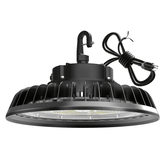What is CRI?
In the field of lighting, CRI stands for “Color Rendering Index”. The CRI is a measure of a light source’s ability to accurately render the colors of objects, indicating how naturally colors appear under the light source. The CRI scale ranges from 0 to 100, with higher values indicating better color rendition.
Specifically:
- CRI = 100: This represents an ideal light source, capable of perfectly reproducing the true colors of objects, similar to the effect of natural light (such as sunlight).
- CRI < 100: The light source will exhibit some deviation in color rendering, with lower values indicating more noticeable color distortion.

Applications of CRI
CRI is crucial in lighting design, particularly in scenarios where accurate color reproduction is essential, such as:
- Retail Stores: To showcase products in their true colors, a high CRI is often required, typically CRI > 90.
- Art Galleries: The accurate representation of artwork colors necessitates a high CRI for the lighting.
- Medical and Laboratory Settings: In environments where precise color judgment is necessary, CRI is a key factor.
- Offices and Home Lighting: While not as stringent as in retail or art galleries, a higher CRI (e.g., CRI > 80) generally provides a more comfortable and natural color perception.
Limitations of CRI
Although CRI is an important metric for assessing a light source’s color rendering ability, it has some limitations:
- Limited Test Colors: CRI is calculated based on eight standard test colors, which may not fully represent the light source’s performance with other colors.
- Incomparable Across Light Sources: Light sources of different types (e.g., LED and fluorescent) with the same CRI may render colors differently.
- Ignores Color Temperature: CRI does not account for color temperature (e.g., cool or warm light). A light source with a high CRI but an inappropriate color temperature may not provide an optimal overall effect.
In summary, CRI is a significant parameter for evaluating a light source’s color rendering capability, particularly in contexts requiring precise color reproduction. However, in practical applications, it should be considered alongside other factors such as color temperature and luminous efficacy for a comprehensive assessment.








